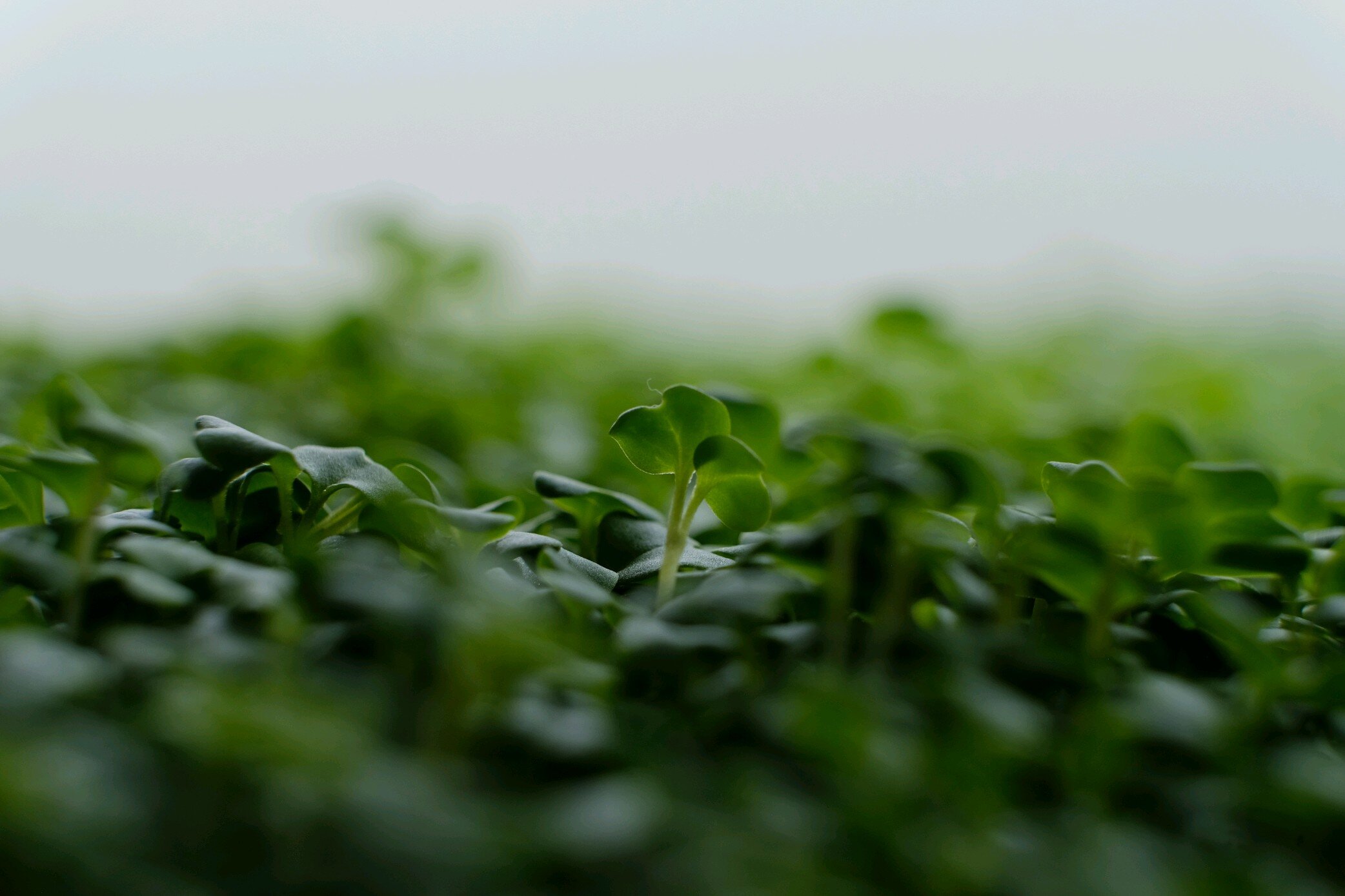
Our Tiny, but Mighty Microgreens
What are microgreens?
The name we give to an edible plant depends on its stage of development. We might consume them as seeds (grains), eat them right after they germinate before they have leaves (these are called sprouts), or let them grow a bit longer (usually 1-2 weeks) until they are known as ‘microgreens’. This point is the height of a plant's nutritional density, meaning the plant contains more vitamins, minerals and antioxidants by volume compared to any other stage in the growth cycle. The increased nutrition is required to sustain the plant on its pathway to maturity and infuses it at the microgreen stage with the strong hit of flavor that is foundational to its true taste.
Microgreens are typically harvested once they have developed their first set of leaves, though sometimes they may have just begun to grow their true leaves.
You might also come across the term “shoots,” which refers to larger microgreens, often from plants like peas and beans where the seedlings are more developed.
What Are the Health Benefits of Microgreens?
Microgreens offer several notable health benefits:
Nutrient Density: Microgreens are extremely rich in nutrients, packing up to 40 times more vitamins and a wider range of antioxidants compared to their mature counterparts.
Raw Consumption: Eating microgreens raw helps preserve their nutrient content, as cooking can diminish valuable enzymes, vitamins, and phytonutrients.


